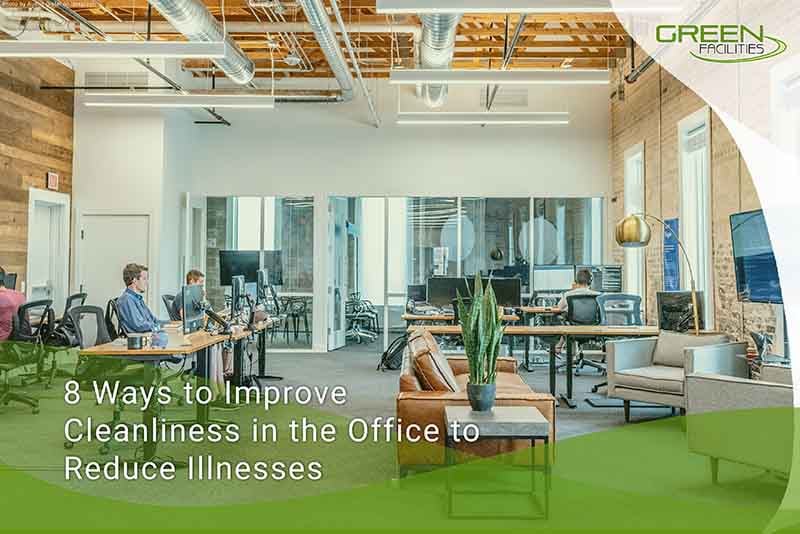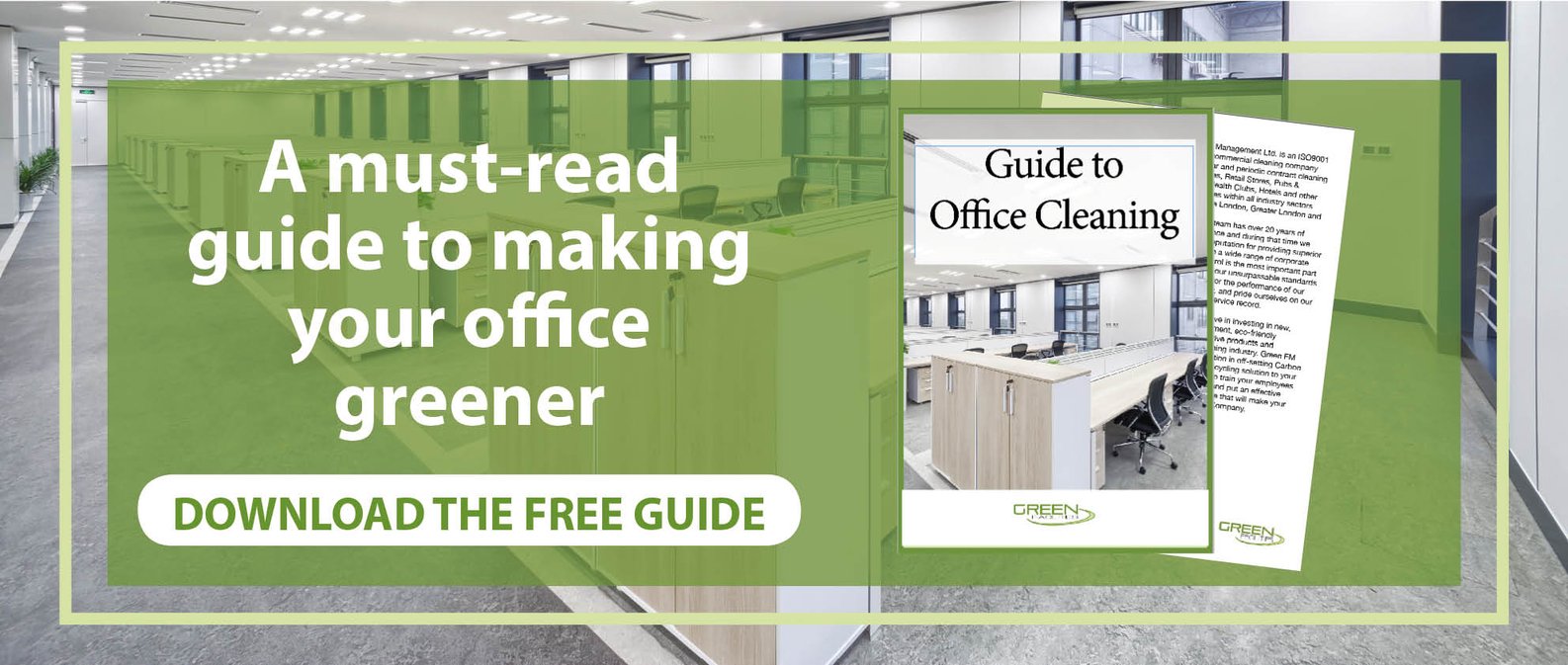6 Steps To Efficient Cleaning and Disinfection

Did you know an average office desk can contain 400 times more bacteria than a toilet seat?
Shocking right?
This unsettling fact spotlights the surprising truth about office cleanliness and the importance of implementing effective cleaning and disinfection steps in the workplace.
Our offices look clean and hygienic, but in today's fast-paced business environment, with people coming and going and sharing equipment, cleanliness extends far beyond appearances.
An unclean workspace littered with unseen germs not only poses health risks but can also lead to increased sick leave and significantly impede employee productivity, morale, and your company’s overall reputation.
Merely wiping down surfaces is not sufficient to combat this invisible threat. True workplace hygiene demands an in-depth approach that goes beyond surface-level cleaning and incorporates deep cleaning and targeted disinfection.
This article introduces six strategic cleaning and disinfection steps for businesses striving to maintain a hygienic and safe work environment. Use this guide as your roadmap to effectively combat the spread of pathogens and maintain an environment that safeguards the well-being of your team and customers alike.
Cleaning and disinfection steps
Step 1: Preparation
A comprehensive workspace assessment is crucial before embarking on the cleaning and disinfection steps.
Identifying high-touch areas in the office, such as office desks, keyboards, door knobs or handles, and shared appliances within communal areas, are a good place to start.
This evaluation highlights the areas needing attention and informs the volume of cleaning required, guiding you toward the ideal products and equipment necessary for the task. For instance, cleaning a large open-plan office might require industrial-grade vacuum cleaners and microfiber cloths for desk surfaces.
The next vital part is choosing the correct cleaning agents. While traditional products are known for their potency, they often contain chemicals that can cause irritation and negatively impact the environment. It's worth considering eco-friendly alternatives.
Green cleaning products can match the effectiveness of conventional cleaners while remaining kinder to the ecosystem and reducing the risk of allergic reactions among employees.
When selecting products and preparing your cleaning arsenal and personal protective equipment (PPE), ensure compliance with the Control of Substances Hazardous to Health Regulations (COSHH). Accompanying Safety Data Sheets for each product and thorough risk assessments are essential to safeguard your cleaning personnel and the broader workspace.
This first step combines cautious product selection with a systematic prep plan, setting the groundwork for a successful, responsible cleaning routine that prioritises health, safety, and environmental management.
Step 2: Deep cleaning to remove dirt and grime
Cleaning is fundamentally about eliminating visible dirt, spillages, and contaminants from surfaces in your workplace.
The cleaning and disinfection steps start with a 'pre-clean' phase, where you initially brush, scrape, or sweep to remove loose dirt, dust, and debris. This ensures that when your cleaning products are applied, they can work more effectively, targeting the dirt and germs rather than being obstructed by layers of dust and grime.
For many work surfaces, applying cleaning products might be as straightforward as spraying a cleaner onto a cloth and wiping down the area. However, more stubborn dirt and stains will need additional elbow grease.
Effective cleaning products are formulated to dissolve tough stains and grease easily. For the product to achieve optimal results, adhering to the manufacturer's recommended contact time is essential, allowing it to fully break down the grime before wiping it away.
Adopting a 'top-down' approach during the cleaning process can further enhance efficiency, ensuring that cleaned surfaces remain uncontaminated. By starting high and working your way down, any dislodged dirt falls to the next area to be cleaned, preventing the need to re-clean already sanitised surfaces.
Special attention should be given to high-touch areas such as door handles, light switches, and workstation equipment, as these are frequent hosts to germs and require meticulous care to ensure a thoroughly clean environment.
Step 3: Rinsing and residue removal
After the gruelling task of deep cleaning, it would be a shame to leave behind any unwanted residue on our surfaces.
Traditional cleaning products can leave behind a film that irritates sensitive skin, like an uncomfortable, itchy sweater. Even green cleaning products aren’t perfect and can attract dust like a magnet without a proper rinse. Pulling in grime right back to where you've cleaned!
Rinsing and removing the residue left from the cleaning and disinfectant products is a crucial part of the cleaning and disinfection steps to achieve a clean and sanitised workplace.
With this step, please remember that the rinsing process differs from surface to surface.
For instance, you can remove the residue from hard floors using clean, hot water and a mop. A spray bottle and a microfibre cloth may be more appropriate for desks and other high-touch surfaces. A dry and wet vacuum cleaner may remove any lingering residue from carpets or fabrics.
Whether mopping or misting, swapping out the water and rinsing your cloth often is key.
Step 4: Effective disinfection to eliminate germs
Cleaning and disinfecting are like two peas in a pod, yet they are entirely different ball games. Cleaning efficiently sweeps away visible dirt and grime, while disinfection zaps invisible bacteria and viruses away. Both are crucial in preventing the spread of illnesses and infectious diseases such as COVID-19 in the workplace and keeping everyone safe and sound.
The choice of disinfection methods highly depends on your workspace's complexity. Simple, flat surfaces might need a spray and wipe down with an EPA-approved disinfectant. However, the E-Mist Electrostatic application system may be better for those nooks, crannies, and critical areas.
Using electrostatic science ensures that every microscopic germ on every surface, even those hard-to-reach spots, gets a ticket to oblivion. Killing an impressive 99.99% of bacteria, viruses, and other pathogens on surfaces and objects.
Remember to also pay attention to high-touch areas such as door handles, light switches, and keyboards, which can be easily overlooked in the cleaning and disinfection steps. These areas harbour many germs that can be easily transferred, so you must ensure they are not missed.
By embracing comprehensive disinfecting strategies, you can transform our workplaces, keeping our teams safe, one sanitised surface at a time.
Step 5: Final rinse to ensure a safe surface
We face the final rinse as we conclude with the penultimate cleaning and disinfection step. Thanks to modern formulations that leave no residue behind, not every disinfectant requires this step.
However, traditional products often need this encore performance. After disinfection, perform a final rinse with clean water to remove any remaining disinfectant residue. Follow the manufacturer's instructions to make sure.
This step ensures that the surfaces are safe for contact and minimises the risk of skin irritation or chemical exposure. It's especially necessary in areas like kitchens, where meals are prepped, to maintain food safety.
The nature of this rinse may differ, from a gentle wipe-down on countertops with a cloth to a thorough mopping of larger spaces. Regardless of the method, this step helps fill your spaces with clean confidence, eliminating visible dirt or germs and ensuring the final result is safe.
Step 6: Drying
We are in the final stages of our cleaning and disinfection steps, and drying is the grand finale.
Proper drying is essential because moisture can promote the growth of bacteria and mould. We recommend allowing surfaces to air dry, but we know this is not always possible during hours of operation. So, to get surfaces to dry quickly, use clean, disposable towels or single-use cloths to dry them thoroughly.
Every single-use item has its purpose, so use them wisely to minimise your ecological footprint while maximising hygiene. Where possible, air dry to perfection when the office is quiet and the hustle and bustle has calmed.
Additional tips to ensure a clean and healthy workplace
These 6 cleaning and disinfection steps are a surefire way to ensure a sanitised workplace, but there’s always room for improvement. Here are a few tips in addition to improving cleanliness in the workplace.
- Deep cleaning schedule:
A consistent deep cleaning schedule is a commitment to health & safety in the workplace. Regularly clean and disinfect shared equipment, such as printers, copiers, and kitchen appliances.
- Hand hygiene:
Train your staff on good hand hygiene. Regular handwashing helps fight germs and the spread of infection. Provide hand sanitizers and disinfecting wipes in easily accessible areas.
- Cough and sneezes:
Model respiratory and cough hygiene by trapping germs in a tissue or an elbow away from others and surfaces.
- Waste management:
Efficient waste management prevents contamination. Dispose well, dispose often, and keep waste bins clean.
Empower employees with knowledge of cleaning efficiency and encourage them to embrace these habits to maintain a healthy workplace.
You may consider the charm of air-purifying indoor plants for a final flourish and added ambiance. They scrub the workplace air, replacing impurities with fresh, oxygen-rich air, and positively affect our wellbeing.
Also, during cold and flu season or viral outbreaks, extra vigilance must be exercised. Hiring a commercial cleaning contractor may be best to handle the additional strain.
More cleaning and disinfection steps than you thought? Outsource your cleaning to a trusted local partner
If managing these 6 cleaning and disinfection steps internally seems overwhelming, consider outsourcing your cleaning needs to a trusted local partner.
Professional cleaning services, like Green FM, specialise in deep cleaning services, ensuring ultimate hygiene and cleanliness. Offering our services throughout London, we’re ISO-certified and committed to using eco-friendly and ethical cleaning products and methods.
Partnering with us allows you to focus on your core business while maintaining a clean and healthy workplace. You will also benefit from our advanced cleaning technologies and extensive commercial cleaning experience.
A clean workplace promotes employee well-being and positions your company as an expert in maintaining a healthy environment. Contact us today for a free quote for a hassle-free experience with a customised cleaning plan tailored to your unique needs.




